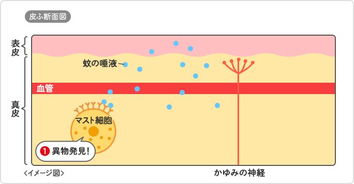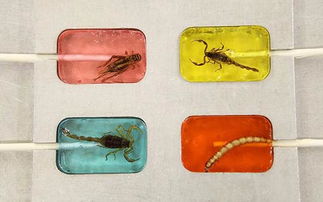
Insect Bite Pictures: A Comprehensive Guide
Have you ever found yourself scratching an itchy bump on your skin, only to realize it’s an insect bite? Insect bites can range from mild to severe, and their appearance can vary greatly. In this article, we will delve into the world of insect bites, providing you with a detailed look at their pictures, symptoms, and treatment options.
Understanding Insect Bites

Insect bites occur when an insect injects its saliva into your skin. This saliva can cause an allergic reaction, leading to inflammation, itching, and redness. Common insects responsible for bites include mosquitoes, ticks, bed bugs, and bees.
Here are some common symptoms of an insect bite:
- Redness and swelling
- Itching
- Pain
- Bump or blister
- Wheal or hive
While most insect bites are harmless, some can lead to serious complications, such as allergic reactions or infections. It’s essential to recognize the signs of a severe bite and seek medical attention if necessary.
Insect Bite Pictures

Below are some pictures of various insect bites to help you identify the type of bite you may have. Keep in mind that the appearance of a bite can vary depending on the individual and the insect responsible.
| Picture | Description |
|---|---|
|
|
Mosquito bites often appear as small, red bumps with a central dot. |
|
|
Tick bites can be challenging to identify, as they often leave a small, red bump with a scab. |
|
|
Bed bug bites typically appear as small, red bumps in a cluster, often on exposed skin. |
|
|
Bee stings often leave a large, red, swollen bump with a central puncture mark. |
Diagnosing Insect Bites

Diagnosing an insect bite is usually straightforward, as the symptoms are typically visible and well-known. However, if you’re unsure about the cause of your bite or if you experience severe symptoms, it’s best to consult a healthcare professional.
Healthcare providers may ask you about your symptoms, examine the bite, and inquire about any recent exposure to insects. In some cases, they may perform additional tests to rule out other conditions, such as allergic reactions or infections.
Treatment Options
The treatment for an insect bite depends on the severity of the symptoms and the type of insect responsible. Here are some common treatment options:
- Over-the-counter remedies:
- Antihistamines: These can help reduce itching and inflammation.
- Topical corticosteroids: These can be applied to the bite to reduce swelling and itching.
- Ice packs: Applying ice to the bite can help reduce swelling and pain.
- Prescription medications:
- Antibiotics: If an infection is present, your healthcare provider may prescribe antibiotics.
- Antihistamines: In some cases, stronger antihistamines may be necessary to manage severe allergic reactions.
- Home remedies:
- Aloe vera: Aloe vera can help soothe the skin and reduce inflammation.
- Baking soda: Baking soda mixed with water can create a paste that can be applied to the bite to reduce itching.
Preventing Insect Bites
Preventing insect bites is crucial, especially if you’re prone to allergic reactions or infections









